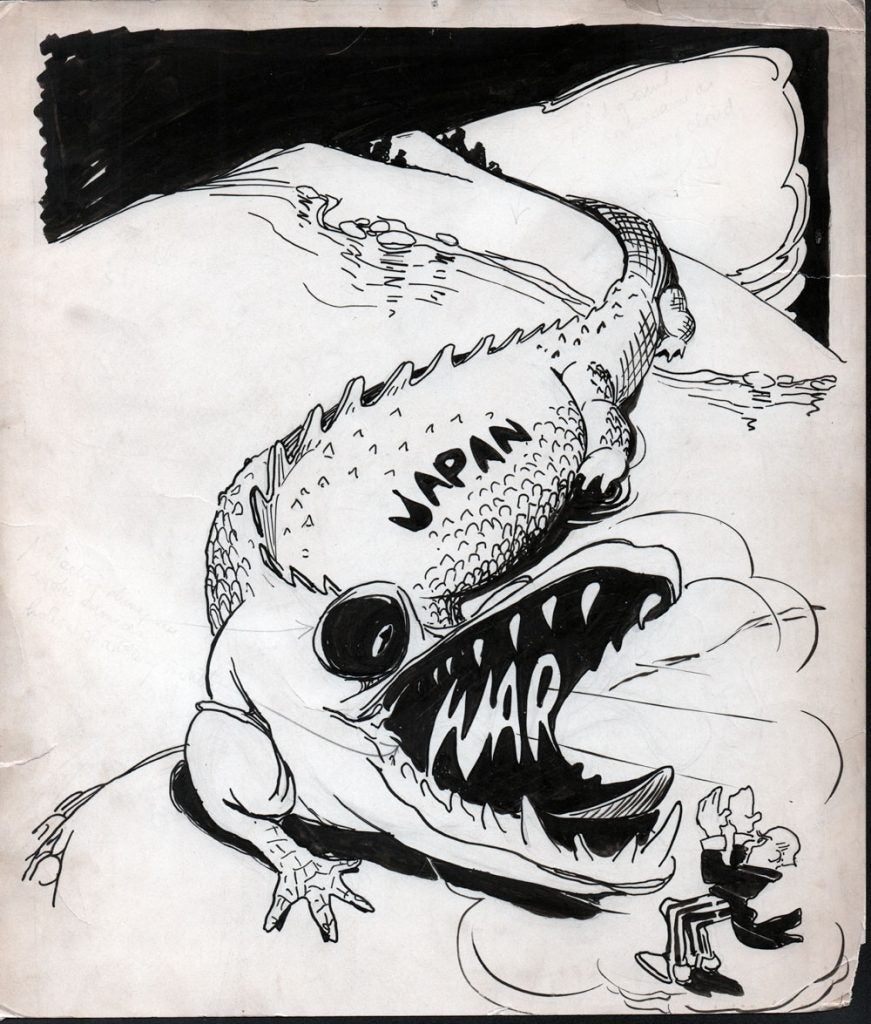
“The Pacific Dragon Shows Its Teeth” (December 8, 1941)
unattributed
11 x 13 in., ink on paper
Coppola Collection
A series of events led to the attack on Pearl Harbor.
War between Japan and the United States had been a possibility that each nation’s military forces planned for in the 1920s, though real tension did not begin until the 1931 invasion of Manchuria by Japan.
Over the next decade, Japan expanded slowly into China, leading to the Second Sino-Japanese war in 1937. In 1940 Japan invaded French Indochina in an effort to embargo all imports into China, including war supplies purchased from the U.S. This move prompted the United States to embargo all oil exports, leading the Imperial Japanese Navy to estimate it had less than two years of bunker oil remaining and to support the existing plans to seize oil resources in the Dutch East Indies.
The Philippines, at that time an American protectorate, were also a Japanese target. The Japanese military concluded an invasion of the Philippines would provoke an American military response. Rather than seize and fortify the islands, and wait for the inevitable U.S. counterattack, Japan’s military leaders instead decided on the preventive Pearl Harbor attack, which they assumed would negate the American forces needed for the liberation and reconquest of the islands.
Later that same day [December 8th local time], the Japanese indeed launched their invasion of the Philippines.

